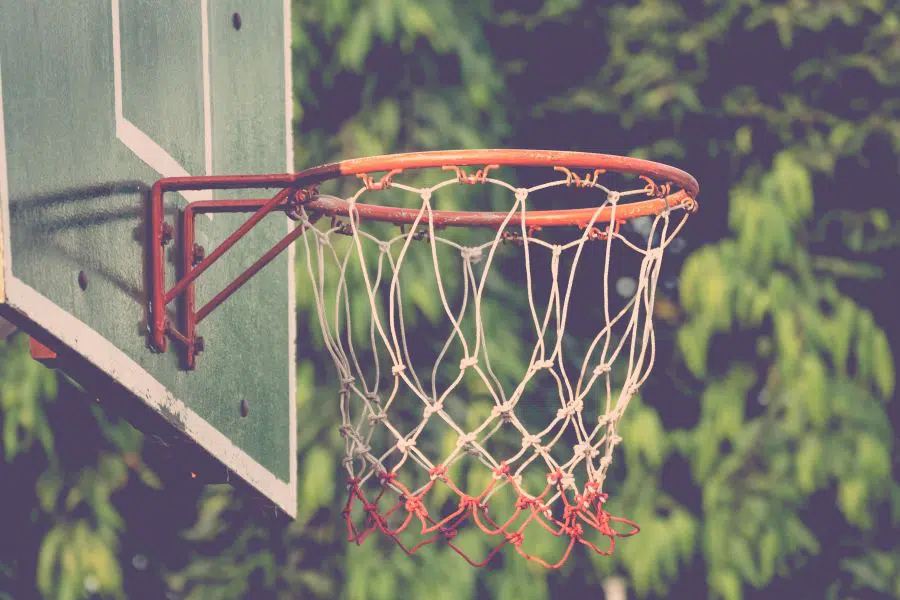Bowling balls and basketballs are both spheres used in popular sports, but they have unique designs tailored for their different game requirements. Here are the major ways bowling balls and basketballs differ:
- Weight – Bowling balls are much heavier
- Size – Bowling balls are larger in diameter
- Materials – Bowling uses polyester, basketballs use leather/rubber
- Finger holes – Unique to bowling balls
- Bounce – Bowling balls have a very low bounce
- Speed – Bowling balls roll, basketballs fly through the air
- Spin – Bowlers add spin, basketball has minimal spin
- Strength needed – Bowling requires more upper body strength
- Durability – Basketball wears faster from dribbling
- Cost – Bowling balls are more expensive due to custom drilling
- Competition specs – Strictly regulated for bowling, more variable for basketball
In this article, we’ll explore these differences in more detail, looking at dimensions, weights, materials used, regulations, and more. We’ll also discuss the history of both balls, how they compare in terms of speed and records, and recommendations for the best balls and maintenance.

Difference in Weight
The weight difference between bowling balls and basketballs is massive – up to a 10x difference!
- Bowling ball – Maximum of 16 lbs (7.3 kg), minimum of 6 lbs (2.7 kg)
- Basketball – 22 oz (0.6 kg), about 1/16th the weight of a bowling ball
This great weight affects everything from the throwing technique to the impact force when rolling vs bouncing. The heavyweight bowling ball allows knocking down pins, while the basketball is light enough to shoot with one hand.
Difference in Size
Along with vastly different weights, the dimensions of bowling balls and basketballs also contrast:
- Bowling ball diameter – 8.5 inches (21.6 cm)
- Basketball diameter – 9.4 inches (24 cm)
So while a bowling ball is not much smaller than a basketball in diameter, the greater density results in a huge weight difference. The large bowling ball size does help give leverage for finger grip and rotational torque.
Materials Used
The outer shell and inner core of bowling balls and basketballs also differ:
- Bowling ball – Coverstock is polyester, urethane or resin. Inner core uses dense materials like resin or ceramic surrounded by liquid.
- Basketball – Cover is leather or composite leather. Bladder is butyl or natural rubber.
These materials affect grip, rotational inertia, and bounce profile. The smooth polyester of a bowling ball allows it to slide easily, unlike grippy basketball leather. And liquid cores give bowling balls energy transfer for pin momentum.
Finger Holes
One obvious visible difference is bowling balls have holes drilled in them for grip during swinging:
- Bowling balls have custom fitted finger and thumb holes drilled to match the bowler’s hand. Depth and spacing is personalized.
- Basketballs have no drilled holes or grips. Players manipulate the ball with an open palm.
Pro bowlers may have several precision fitted bowling balls to optimize hand feel and release for different lane oil conditions. The bare basketball allows dribbling and versatile control.
Difference in Bounce
When dropped, bowling balls have an extremely low bounce, while basketballs bounce very high:
- Bowling ball bounce – Just 2-5 inches, due to the dense materials
- Basketball bounce – Around 50 inches on average
Bowling balls transfer their energy into motion rather than rebound when hitting the lane. The elastic materials of a basketball maximize energy return on impact.
Speed They Travel
Bowling balls and basketballs move at very different velocities:
- Bowling ball – 15-25 mph when rolled down the lane
- Basketball passes – Up to 50-75 mph at elite levels
- Basketball shot – Up to 55 mph on long shots
The greater mass of a bowling ball prevents as much speed, but allows powerful pin impact. Lighter basketballs can be thrown and shot at much higher speeds with less strength required.
How Fast is a Serve?
Serving speed highlights the differences in mobility:
- Bowling ball – No serve, ball is rolled from a standstill
- Basketball serve – Up to 55 mph from a standstill throw
Without the ability to impart force and momentum through a running throw, bowling balls have a major speed disadvantage on release.
World Record Speeds
The speed limitations of bowling balls also constrain their records:
- Fastest bowling ball – 29.2 mph by Cameron Weier
- Fastest basketball throw – 71 mph by Damon Bailey
With techniques like alley cat releases, top bowlers can optimize ball speed but can’t match the unconstrained catapult effect basketball players benefit from.
Comparison to Other Sports Balls
- Bowling balls are most similar to bocce balls and lawn bowls in weight and rolling motion.
- Basketball is comparable only to volleyball in materials, though volleyball is slightly softer and slower.
The Best Ball Brands
For bowling, Storm, Brunswick, Hammer, and Ebonite are top brands. Basketball sees Wilson, Spalding, Nike, Rawlings as major players.
Many bowlers have sets of different reactive resin balls for different lane conditions. Most basketball players use a single favorite ball fitted for their grip style.
Caring For the Balls
- Bowling balls should be cleaned after each use with a mild cleaner to maintain the reactive coverstock.
- Basketball care involves maintaining proper inflation – 7-9 psi is ideal.
New bowling balls rarely need resurfacing for the first 200 games or so. Basketballs lose bounce over time as the bladder breaks down.
How Age Affects Performance
Used bowling balls become “dull” over time as oil soaks deeper into the coverstock, requiring resurfacing. But the core performance remains consistent.
Basketballs progressively lose inflation pressure and bounce livelyness with age. A brand new basketball has 30% higher bounce on average.
In summary, bowling balls and basketballs differ substantially in their physical attributes and functional design to serve their sports – with bowling balls weighted and shaped for powerful knockdown rolling, while basketballs are constructed for athletic dribbling, passing, and shooting play.
